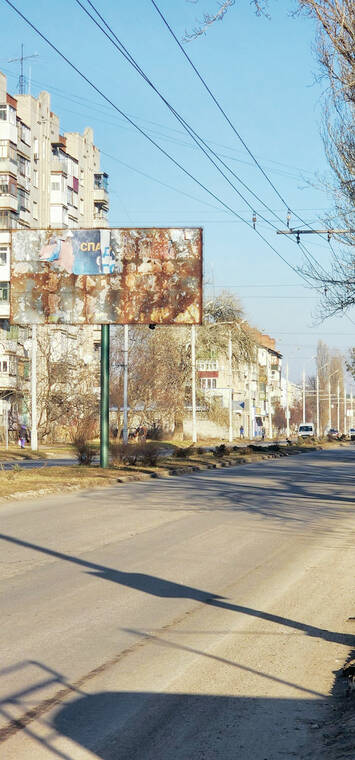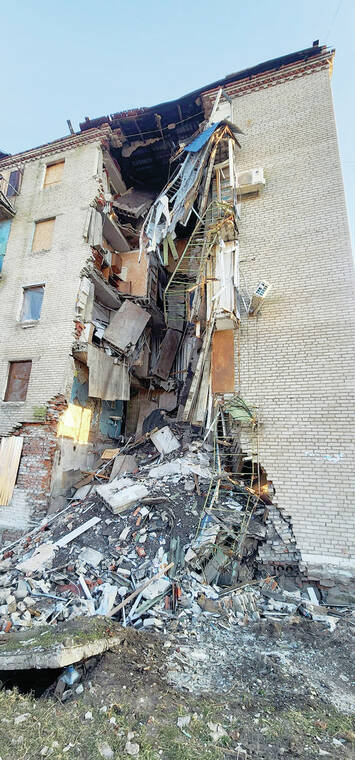SLOVIANSK, Ukraine — There was a whistling sound, and then a loud boom and a puff of smoke about 100 yards away.
Russian artillery shells began to rain down near the casualty collection point where Kaua‘i Dr. Allon Amitai and his team have been treating patients for the past few weeks.
They had hoped the location, to the west of the city of Bahkmut, Ukraine, was far enough away from the front lines to avoid shelling — but nobody is sure where the front lines are anymore, he said in a messaged conversation.
The Russian military, with the assistance of the Wagner mercenary group, has been gaining ground in the hotly contested Donbas region in recent weeks.
At the sound of the guns, the team rushed into their borrowed ambulance to get out of range. It took a few tries for the engine to catch, but finally they were gunning it out of the impact zone.
Out the ambulance window, Amitai saw another vehicle lose a tire after being struck by a shell. As the tire rolled away, the car managed to keep grinding forward on three tires and a rim.
After a couple miles of driving, the team was safe from the artillery fire.
Once the shelling died down, they returned to collect more casualties. Afterward, they laughed and took selfies, relieved to be alive.
“Not much terror,” wrote Amitai of the shelling. “Just had to do what needed to be done. In that case, getting out of the danger zone.”
‘Semblance of normalcy’
Amitai is on the third week of a five-week tour working with the nongovernmental organization Global Outreach Doctors, which is embedded with a local Ukrainian brigade.
After the shelling, their team retreated to a safe house in the city of Sloviansk last weekend to coordinate their next move.
“Refugees filter in and there is a rare shelling, but life continues on with a semblance of normalcy,” wrote Amitai.
Those living in the area can use the Live Universal Awareness Map app to see attacks and bombings in real time, as red icons labled with an image of a rifle or a bomb.
“It’s still pretty depopulated, and billboards just have scraps of old advertisements,” Amitai continued. “But you can still get pizza and schwarma, and go to the hardware store, and market and gas station.”
Amitai, who worked at Wilcox Medical Center on Kaua‘i for eight years before shipping out to Ukraine, has been seeking Hawai‘i-style foods, making miso soup and fish and nori.
“Ukrainians in the field eat a lot of instant noodles and instant potatoes and salami and cheese,” wrote Amitai. “In the cities, fast food like shawarma and hot dogs are popular. Humanitarians and foreign legionnaires eat whatever they can scrounge up.”
One medic survives mostly on canned beans, Amitai said.
The war zone draws a collection of big personalities, with the doctor reporting he has met a surprising amount of social media celebrities.
One of his colleagues is Ukrainian medic Anastasia Shevchenko, also known as singer and TV host Stasik, who makes politically charged music videos drawing on her war experience. Another colleague is a Shaelynn Jabs, a Canadian woman who served multiple volunteer tours in the fight against ISIS in Syria, surviving two deadly vehicle rollovers and a bullet to the abdomen — before joining the Ukrainian cause.
With their previous position in the line of fire, Global Outreach Doctors is working on establishing another casualty collection point at another small town west of Bakhmut. As they set up the new site, Amitai will travel to Kyiv to train local doctors.
•••
Guthrie Scrimgeour, reporter, can be reached at 808-647-0329 or gscrimgeour@thegardenisland.com.




